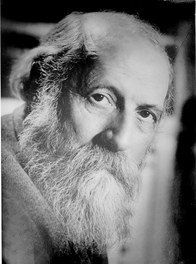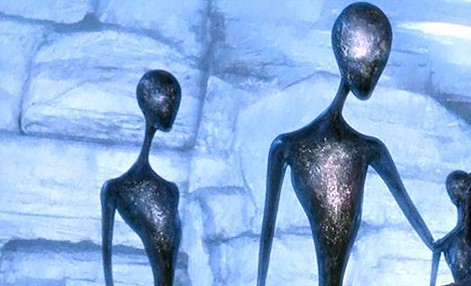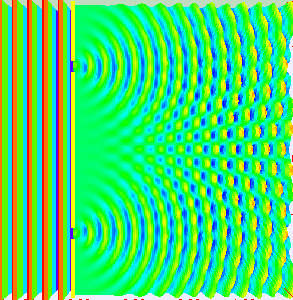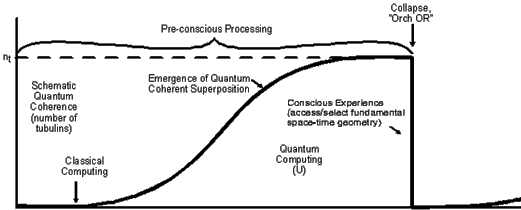Perhaps the tree was mentioned because Buber, sometimes cited as one of the thinkers behind dialogic education, mentioned a kind of dialogue with a tree in his classic text ‘I and Thou’. His main argument in ‘I and thou’ (Ich und Du) is that how we orient ourselves to others makes a difference to how we see them or feel them. We can objectify them, turn them into things to be studied and classified, - the ‘I to it’ orientation - or we can relate to them in a responsive way as others who also make meaning – ‘the I -thou’ orientation. The key indication of the ‘I-thou’ orientation is that we are open to the possibility that we might learn something.
It is sometimes forgotten that Buber’s argument was not just about how we treat other human beings but also about how we relate to otherness in general including how we relate to God and how we relate to nature. Early in the book, to present his main thesis that how we orient to others matters, he gives the illustration of how we can relate in different ways to a tree: we can see it aesthetically, as lines and colours, standing back from it as if was a picture, we can relate to it as just an instance of universal scientific laws or we could perhaps dissolve it into numbers, the measurements, the number of carbon atoms etc. These are all examples of variations of an objectifying ‘I to It’ orientation. Buber continues that it is also possible to take a different orientation to the tree and relate to it as a thou.
| ‘The tree is no impression, no play of my imagination, no aspect of a mood; it confronts me bodily and has to deal with me as I must deal with it – only differently. One should not try to dilute the meaning of the relation: relation is reciprocity. Does the tree then have consciousness, similar to our own? I have no experience of that. But thinking that you have brought this off in your own case, must you again divide the indivisible? What I encounter is neither the soul of a tree nor a dryad, but the tree itself.’ I and Thou p 6/7 |
Buber uses the term ‘reciprocity’ implying that he means a dialogic relation. This raises a challenge for how we understand the essential dialogic relationship that underlies theories of dialogic education. Dialogue is often defined as requiring two or more subjectivities each actively orienting towards the other or others in the dialogue. It seems unlikely that the tree outside my window really has a sense of my existence and is orienting itself towards me. But I think that there is another way of defining the essential dialogic relationship.
Here is my alternative definition:
In a dialogic relationship there are two sides, an inside and an outside, held in a relationship of tension in which they can reverse perspectives but not join.
For example, let us assume that I am talking to you now as I write. My own thoughts are open to me as if they are in field of light. I can see my intentions as I plan my next sentence. My intention is to reach you, to make you stop and think, so I really have you in mind all the time. But your thoughts are dark to me. The dialogue, this dialogue here, has two sides, an inside – ‘me’ – and an outside ‘you’. But the outside is not bounded – I do not even know your name – you could be anybody and probably are. Just imagine if this blog somehow survives the destruction of the earth by asteroids in the next century and is found by aliens in a structured fragment of computer hard-drive floating in space in a million years’ time. Perhaps that is ‘you’?
Nonetheless, despite the unknown nature of my interlocutor, I sense that there is a dialogue. To write I need to take your position and imagine your response. More than this, the writing – my ‘voice’ which I hear in my head even as I type rapidly on the keyboard – emerges out of the relationship between me and you and would not be possible without that tension. I am not writing just what I think nor just what I think you want to hear but something in-between – something that would not exist or make sense without both sides in the dialogue.
Dialogue as ‘superposition’
One barrier to understanding Buber’s position on dialogue with a tree might be some everyday assumptions about the physical world. According to everyday physics, the physics of Newton still taught as ‘true’ in schools, there is a box of space and time containing physical individuals and two different physical individual bodies cannot be in the same place at the same time. The everyday image of dialogue assumes this everyday physical world in which different people, incarnated in bodies, talk to each other through brains that form sentences and mouths that speak them. Trees do not have brains and mouths so it seems unlikely that they have a voice. The rather more modern – if already one hundred years old now - quantum theory of the physical offers a very different image. This is ‘superposition’ or the claim that while we do not know what the state of any object is, it is actually in all possible states simultaneously, as long as we don't look to check. It is the measurement itself that causes the object to be limited to a single possibility. Wave-particle duality is a good example easy to demonstrate in the classroom. This is the claim that light is both a wave and a large number of small particles at one and the same time. As a wave it acts as a collective and as particles it is made up of many separate individual paths. (see figure 3) Whether light appears as a particle or as a wave depends upon how we set up the experimental apparatus to observe it.
I not aware if Buber knew much about quantum theory but one implication of his main thesis is that when we observe the world in ‘I-it’ mode we fix a world of distinct objects and when we observe in ‘I-thou’ mode we open up a very different world of entangled relationships and possibilities of learning across apparent boundaries.
By taking an I-thou attitude we are opening up the gap that separates a person from a tree in a way that opens up something else - the potentiality for different ways of being that underlies that gap. This is not a way of accessing the secret intimate thoughts of the tree itself but perhaps we are accessing the entangled quantum state that underlies the division me/tree. This space is not empty. The quantum world is not indivisible, as Buber suggests it is in the quote above, but has a topology with many structural features particularly probability curves suggesting where particles are most likely to occur.
If the ‘I-thou’ mode involves an element of stepping back into that quantum state then through this move I can, intuitively, find myself on both sides, both inside and outside, both observer and observed[i].
So was Sasha right to claim that I am just projecting my feelings into the tree when I dialogue with it? Yes and no. It is perhaps true that dialogue with nature can be a way to dialogue with what Freud and Jung call the unconscious mind. Feelings that we have but do not acknowledge might be recognised when projected outside us into nature. But in exactly the same way we could talk of the tree projecting its thoughts into me. The point is that neither I nor the tree are the primary reality here, the primary reality that thinks and talks and sees, is an entangled system including the potentiality to be me and to be the tree. If you hang around long enough with trees you will find yourself having tree-like thoughts that well-up as if from the inside. The nervure of the leave is already a model for many areas of thought (see figure 4 - leaf). More poetically the mood of this tree, its dark warm stillness surrounded by the green fluttering energy of its leaves – perhaps reaches me from the inside.
Technology
The focus here on dialogue with a tree might suggest some sort of ecological movement in education engaging more with nature. There is evidence that there can be a positive impact on wellbeing from time spent with trees and with nature. But the argument in this blog applies just as much to the technological environment – a kind of second nature - of young people today. Entanglement with nature can help understand the identification with places of many cultures, perhaps most strongly, Australian aboriginal groups. It can also help us understand how a new identity might form entangled with the global or unbounded community interacting on many Internet spaces.
In school, in the context of reading poetry, I recall being told, in no uncertain terms, that projecting feelings onto nature was a fallacy, not just any fallacy but ‘the pathetic fallacy’. Nature did not have feelings, the teacher said, only humans can have feelings – the world is quite neutral but humans project meanings and emotions onto it.
Vygotsky was simply articulating the dominant view of his time when he wrote, in the 1920’s, that the children’s thinking is ‘participatory’, a style of thinking that children share, he claimed, with primitive people and with schizophrenics, (Vygotsky, 1986, Thought and Language, p 236). His aim, again just voicing the assumptions of his time, appeared to be education out of participation and into more abstract more logical ‘scientific’ thinking. The same view is even clearer in Piaget. The implications of dialogue with trees and all forms of non-human otherness is that participation is not just a starting point of education to be trained out of children, but is essential. It is the source of meaning. The perpetually renewed source of science as well as of art. It is also, not insignificantly, the perpetually renewed source of faith that life is worth living.
There are pedagogical issues to be addressed about how to teach and learn subjects like maths, science and literacy in ways that do not cut the umbilical cord with participatory meaning. I have referred to this elsewhere as teaching which deconstructs with one hand while it constructs with the other. Basically we can construct selves and ‘knowledge’ and ways of thinking that are light and open, porous to the outside, always aware of their provisional status and so able to change.
But as well as the pedagogical issues there is perhaps a more important issue here to do with meaning. If there is a larger thinking that thinks us as it thinks the trees and the stars, then meaning comes from our participation in that larger thinking. Meaning therefore requires surrender as much as it requires construction. It turns out that traditional religious world views have been right all along in certain fundamental respects and modern secular humanist rationalist world views, dynamic as they may have been, have missed out something rather important. If only those clever people peddling the view that the universe is meaningless had spent more time as children in dialogue with trees. As Buber almost said, once you have had a proper dialogue with a tree it becomes no longer possible to find the universe meaningless. So perhaps having a dialogue with a tree is another one of those basic ‘skills’ that ought to be on the curriculum.
Consciousness in the universe: A review of the 'Orch OR' theory.
Phys Life Rev, 2014; Mar 11(1):39-78.) Other arguments could be made. We could look at how the image of the tree and image of the self are stored in an entangled way in the brain. ‘Seeing’ the tree involves a kind of holographic projection from the brain (https://youtu.be/3MSw2irv0-A) implying that in a sense I (as my brain before projection) am also already the tree that I see. The ‘real’ tree and the ‘real’ me that is interacted with in order to produce the holographic projection that we call perception would have to be described in quantum level terms. Merleau-Ponty does a phenomenological reduction to explore how clear images such as trees and bodies (ie me) emerge from a much less clear ‘pre-thematic’ perceptual ground. This pre-thematic field of potential perception precedes and exceeds actual perceptions. In other words the argument about being both inside and outside acts of perception does not depend entirely on the appeal to quantum theory.









 RSS Feed
RSS Feed